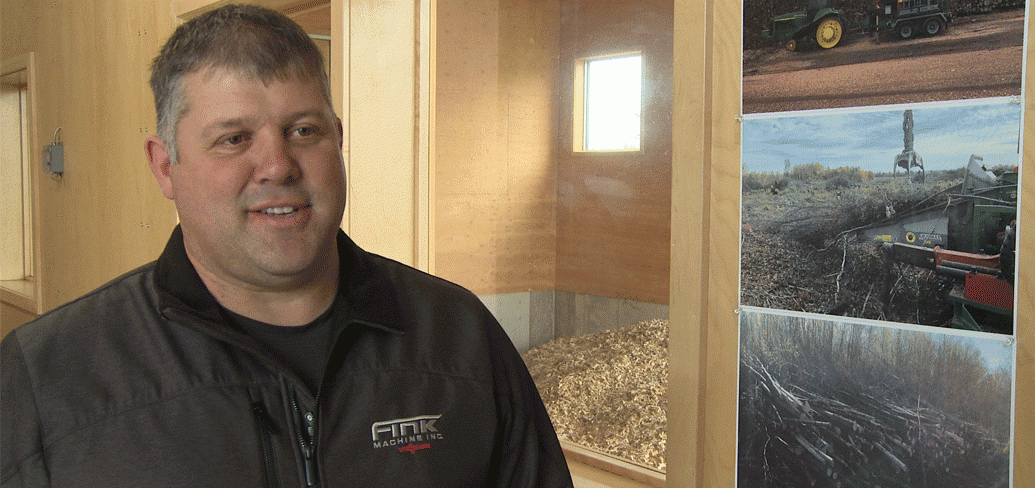A homegrown heating solution

On the first snowy late fall morning the big garage behind the Prince County Hospital was toasty warm and smelled of balsam fir.
“Smells great eh?”shouts Dick Arsenault, chief bioenergy manager of ACFOR, over the humming engines of the German-engineered machines. He is also co-owner of the company with President Mathieu LeBlanc.
Instead of chugging imported oil on this unseasonably cold fall morning, the machines are heating the hospital and nearby Summerset Manor with locally produced woodchips from sustainably managed forests. Using biomass heating in government buildings will displace approximately 4.0 million litres of fuel oil a year and reduce 11,000 tonnes of greenhouse gas.
Arsenault, who grew up in the woods at his forestry contractor father’s side, explains the process.
“We go into the woods and we buy local waste wood from contractors. It is some of the material they can’t use and we chip it. We bring it here and it goes through the process of the augers and into the boilers and heats the hot water and then the hot water is pumped into the hospital to heat the buildings,” he said.
It’s been an enduring partnership. Arsenault successfully installed his first biomass-fueled boiler in the École Évangéline school in 2008.
“I was just up there to check on that this week,” he said.
Burning chips from waste wood is a sustainable form of energy and it is a good way to make use of wood that would normally go to waste. For more than a decade, Prince Edward Island has been moving toward using forest management practices including selective thinning. The current biomass heat installations represent approximately 4.2 per cent of the annual growth of PEI forests.
Biomass heating supports local industry with hundreds of thousands of dollars traditionally spent on imported fuel now spent locally on a renewable home-grown energy source. “It’s better for the environment and creates local jobs so everything stays on PEI,” Arsenault said.
Using biomass is one way the Government of Prince Edward Island is working to reduce greenhouse gas emissions while protecting the pocket books of Islanders.
“Last winter, 29 provincial buildings used biomass heat and we are working on up to 20 more installations over the next three years,” said Transportation, Infrastructure and Energy Minister Paula Biggar. “Heating provincial buildings with biomass is environmentally responsible, it reduces our carbon output, and supports local industry.”